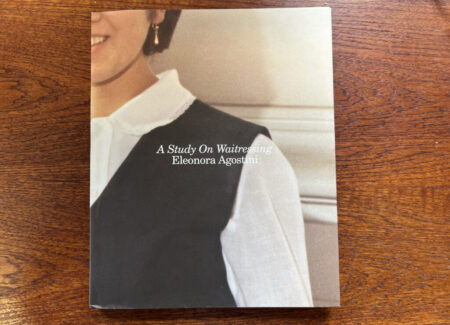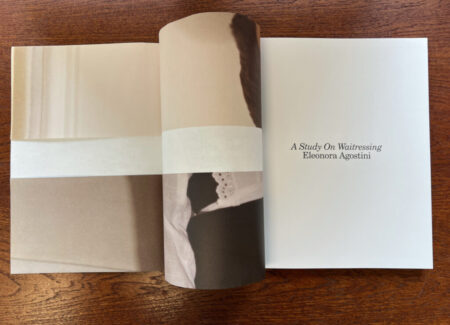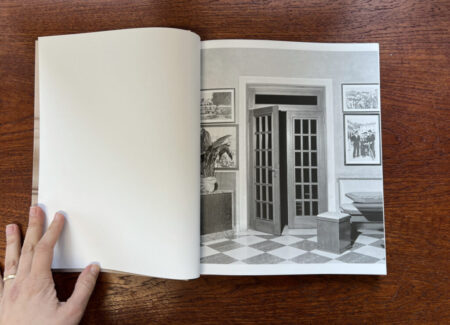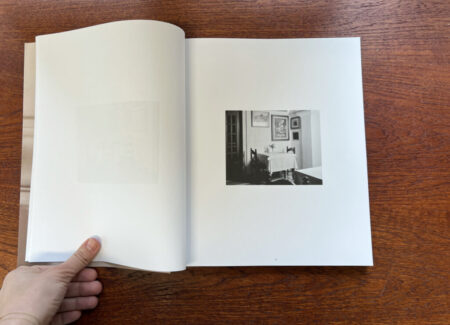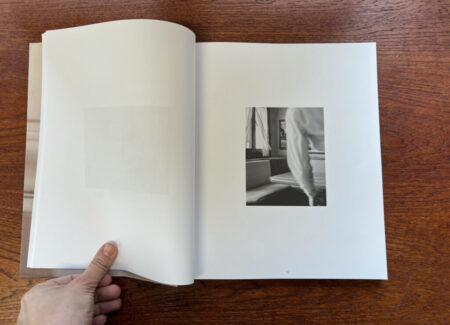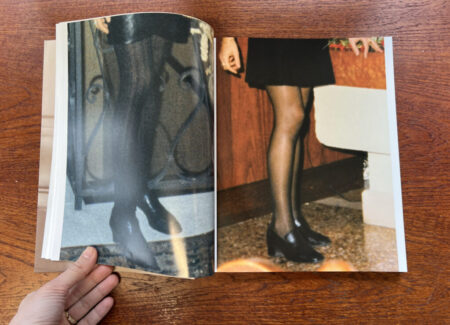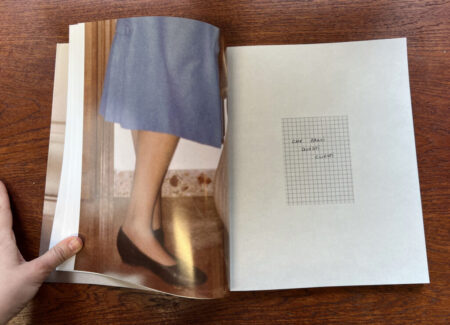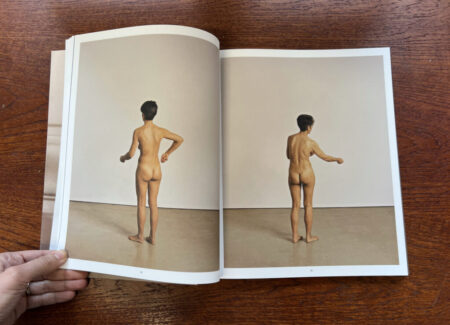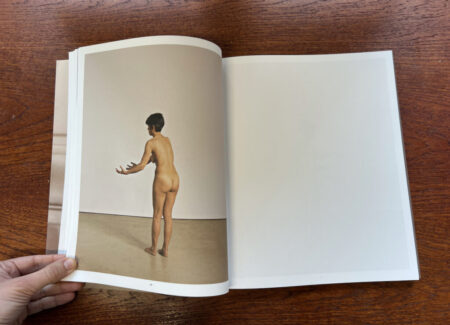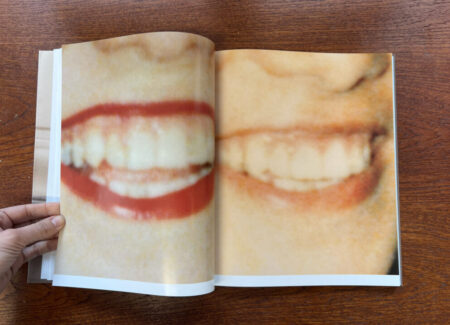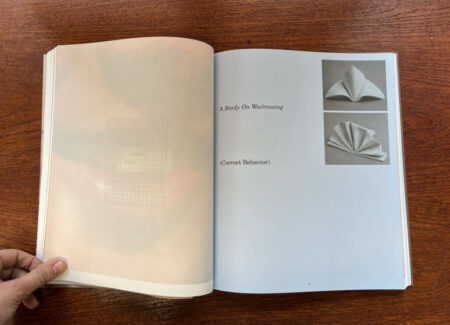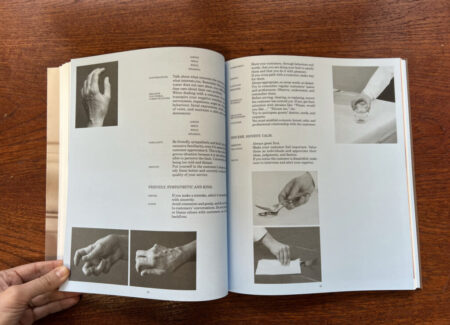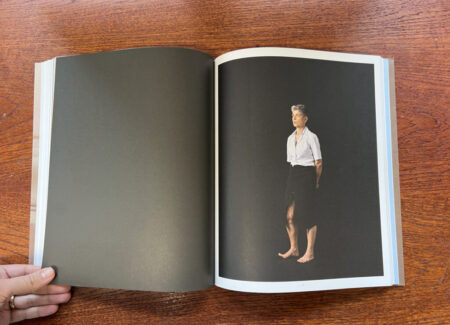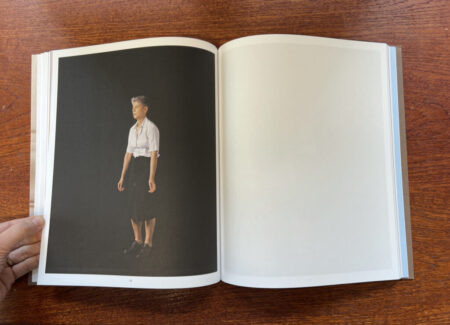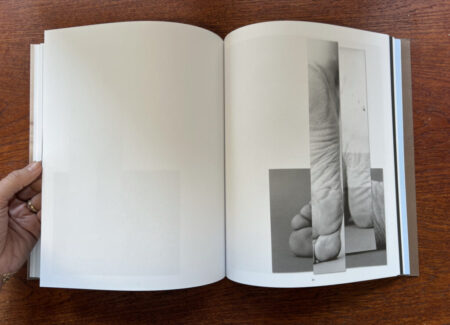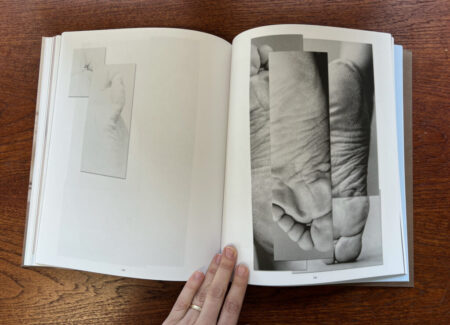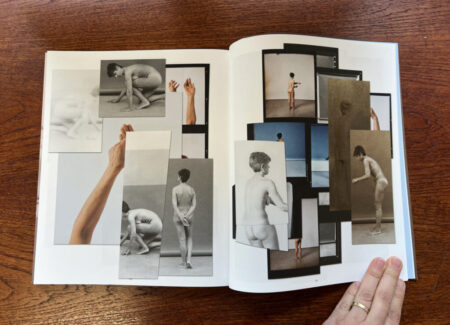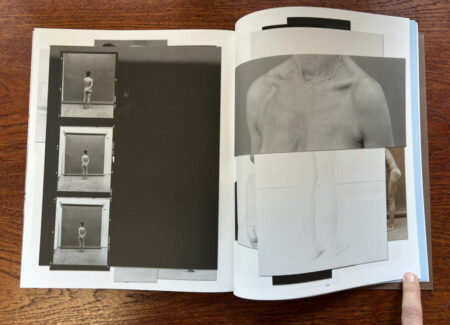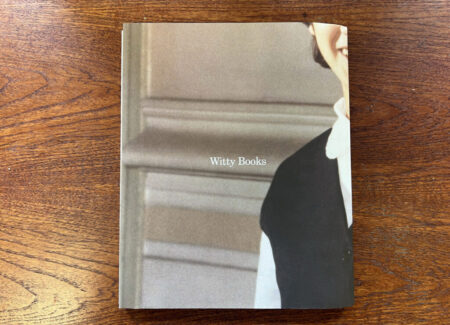JTF (just the facts): Published in 2024 by Witty Books (here). Softcover, 23×28 cm, 168 pages, with approximately 112 black-and-white and color reproductions. Includes a text by Joanna Walsh. Design by Massimiliano Pace. (Cover and spread shots below.)
Comments/Context: Eleonora Agostini is an Italian artist currently based in London whose photographs interrogate fleeting, everyday objects, gestures, and social exchanges in order to reveal complexities that are easily and often overlooked by contemporary society. A Study on Waitressing approaches the role of the restaurant waitress, as the title implies, using the mise-en-scene of the restaurant as its field of study. The primary actor in the project, in this case the waitress herself, and the person who is very closely studied, is the artist’s mother.
The book is divided into six sections, chapters if you will, each with a different photographic style and approach to the subject. Some chapters are on matte paper stock, others on glossy, and the transitional pages that denote the chapter changes are a combination of a single black matte page with a semi-transparent sheet and a hand scrawled note in the artist’s native Italian.
The first chapter opens with a series of black-and-white photographs printed on matte paper that lead us into the restaurant. An invisible hostess, the photographer, leads our eyes and ushers us to be seated at a table inside. Chapter two is printed on a glossy paper stock, and offers a series of tightly cropped color images of various women’s legs, some in work clothes and some in leisure clothes at the seaside, printed to be nearly full bleed, and enlarged nearly beyond the appropriate image resolution. The effect implies these are older images, pulled from an unknown archive.
Chapter three takes on a third photographic style, studio lit color portraits of a nude middle-aged woman printed on matte paper. The woman depicted here is the artist’s mother. In each photograph it can be inferred that her gestures are those of a person serving (or performing for) guests at a restaurant’s table. The vacancy of her gaze suggests the motions are those of a person in a hypnotized state, one who has temporarily let go of her true self in order to fulfill her duty as a server. I am fascinated by the repetition of her likeness, as an uncostumed performer offstage in the studio, presenting a typology that ultimately serves to dehumanize the actions of waitressing. The woman appears robotic, outside of herself like a ghost.
The fourth chapter consists of sixteen close up views of women smiling. This chapter is printed again on glossy stock, matching the style and design of the chapter that introduced women’s legs. The smiles themselves are all incredibly exaggerated, implying a strong sense of masking that would seem to render the true feelings of the person behind the mask unknown. This chapter is broken up by text Agositini excerpted from a hospitality manual about waitressing (which I will return to a bit later). Chapter four returns to color pictures made in the studio of the same middle aged woman seen before, again the artist’s mother, now clothed in a typical waitress’s uniform. In some scenes, she is visibly tired, stretching, and slouching, showing us the fatigue and resilience of the laborer. There is a marked difference in her body language in these images compared to those of her nude. In her costume she produces gestures and facial expressions that seem to violate the code of what is deemed socially acceptable of the waitress. She must smile, or at the very least, be neutral, despite how she may really feel.
Chapter five is jarringly different. We see a variety of views of a naked foot, tightly cropped and gathering many single feet on each collaged page. This chapter is reminiscent of How to Raise a Hand by Angelo Vignali, published in 2022 by Witty Books (reviewed here). What draws the most attention on each page of this chapter is the dryness and implied soreness of each area of the subject’s foot – the heel, the arch, the ball.
The sixth and final chapter expands this frenetic yet thoughtful layering of images. We again see the waitress, the same woman as in the earlier chapters, but this time we are shown an array of contact sheets, both in color and in black and white, where the subject is clothed and nude, in the studio and outside at the beach, standing straight and bending, with the body in various vulnerable yet resilient modes, the images overlapped and intermingled.
“A Study on Waitressing (Correct Behavior)”, the text that begins on page 57 at the direct center of the book, is eight pages long and printed on a heavier weighted blue matte paper. In a pithy and exactingly dry tone, the writing describes how a waitress ought to appear, dress, speak, and maintain herself, and ultimately perform. It emphasizes the importance of discretion, grace, appearance, mannerisms, and the appearance of sincere sympathy and calm. It is an exhaustive manual on how to be a waitress. This text is not by Joanna Walsh, but rather an excerpt of a hospitality manual. The piece written by Walsh, “On Waiting”, begins on page 153, on the same matte blue paper as the earlier writing. While the style of writing in “A Study on Waitressing (Correct Behavior)” is quite different from the style of writing authored by Walsh on the book’s final pages, it is not simple to discern these two pieces of writing are from two different sources.
Agostini’s engaging photographs and collages give a private audience to her mother’s performance as a waitress in the family’s restaurant. We see her engage in the gestures and positions that animate the role of the server. In no other space than a photograph would we otherwise get to examine her so intimately. We can study her, without the concern of her gaze falling back on ours. We can imagine her strength in action. We can see her in moments of malaise in the studio views. The chapter that displays the feet allows us to examine and imagine the toll this work takes on the small of the foot that supports all of the body’s activity. We are not shown the moments of rest the waitress clearly needs in order to fulfill her role and therefore we must assume that they happen in moments not worthy of view. Seen together, it is fascinating to watch a daughter observe her mother in such a fastidious and interestingly obsessive way.
I chose this book because I was captivated both by its title as well as the publisher’s description. I was unaware that before the work became a book late last year, A Study in Waitressing earned Agostini the honor of being named a finalist of the Luigi Ghirri award in 2023, and the following year, a participant in the biennial Foam Talent exhibition in Amsterdam in 2024.
A Study on Waitressing delivers a smartly conceived photobook, one that allows us to look closely at the gestures of service and the multifaceted elements of what is expected of those who fulfill this role and the toll it takes. It is equal parts conceptual, documentary, and biographical in its approach to the subject of waitressing, producing work that is worth looking to again and again to see what can be discovered upon each return. The book’s clever design allows the reader to think critically not only about the cultural expectations embedded in the role of the waitress, but more broadly, what we have all come to expect of women’s performance, no matter what their role in contemporary society.
Collector’s POV: Eleonora Agostini does not appear to have consistent gallery representation at this time. As a result, interested collectors should likely follow up directly with the artist via her website (linked in the sidebar).
